7Hz x Crinacle Salnotes Dioko Review: Muddy Waters

7Hz Dioko Review
Written by @Fc-Construct, Review unit provided by Linsoul
Introduction
If you know anything about the IEM scene, you’ll almost undoubtedly have heard the name Crinacle. Most known for his ranking list and excellent measurement database, Crinacle has also expanded into collabing with various Chinese companies to develop IEMs. To date, Crinacle has a total of seven collaborations across seven different companies, the most famous of which is the superb MoonDrop Blessing 2: Dusk. At the heart of each collab is a Crinacle approved tuning. For those who trust in Crinacle’s name as a reviewer, it’s a compelling selling point when trying to shift through the sea of ChiFi products.
The 7Hz x Crinacle Salnotes Dioko is the latest in the line of Crinacle’s collaborations. Specifically, it is a planar IEM in the same vein as the recent crop of planar IEMs such as the Letshuoer S12, RaptGo Hook-X, Tin HiFi P1 Max, and of course, the 7Hz Timeless. In fact, it is the Timeless that first kicked off the planar revolution about a year ago, coming in with solid technical performance and tuning at a competitive price of $220. The Dioko aims to capitalize on the Timeless’ success by leveraging Crinacle’s tuning prowess and significantly reducing the price to a very budget friendly $100. On paper, this is an absolute no-brainer. But in practice, well, the story gets tricky.
- Product Summary
- Accessories
- The Tuning Debacle and Planar Variance
- Frequency Response (With Incorrect Filters)
- Frequency Response (With Correct Filters)
- Presentation
- Comparison to 7Hz Timeless
- Conclusion
7Hz Dioko – Product Summary
- Reasons to buy
- Strong Value Proposition
- Solid Technical Performance
- Good Tuning
- Reasons not to buy
- Incorrect Tuning Filters Upon Release for Some Units
- Sharp Treble Peaks at 6KHz and 12KHz
- Below-Average Dynamics and Bass Impact
What's in the Box
The accessories of the Dioko are honestly impressive for the price tag. The first is its overly large but extremely good IEM case. Next is a number of generic colorful silicon tips. But the star of the show is on the Dioko itself. It’s a pair of Xelastec-like eartips. These tips are quite unique in the way they feel and seal within your ears and can run over $20 for a set. Finally, the cable is a high quality 2-pin braided cable. Though it has some cable noise, there is little cable memory. Honestly, if you were to buy the accessory set like this from a 3rd party, it’d easily cost you $50. The Dioko itself has a large, chunky, oval-shaped shell with a reflective purple faceplate that’s pretty to look at. It’s made of metal and has a decent weight to it. I was initially quite concerned for the fit and comfort based on how chunky it is, but I can happily say the Dioko is a comfortable fit for me. Moreso than the Timeless despite being larger. It has better ergonomics with the nozzle angle and length to allow the Dioko to safely bypass its shell. Additionally, the Xelastec-like tips work extremely well here. I didn’t like this sort of tip on some of the other IEMs I’ve had but on the Dioko, it fits my ears very well and forms a superb seal without feeling uncomfortable. That said, given the size of the Dioko I don’t think it would be practical to use it for running or as a beater while working out. One thing to note is that you will want to invest in a dongle such as the Apple dongle. The Dioko does require a surprising amount of power.
The Dioko itself has a large, chunky, oval-shaped shell with a reflective purple faceplate that’s pretty to look at. It’s made of metal and has a decent weight to it. I was initially quite concerned for the fit and comfort based on how chunky it is, but I can happily say the Dioko is a comfortable fit for me. Moreso than the Timeless despite being larger. It has better ergonomics with the nozzle angle and length to allow the Dioko to safely bypass its shell. Additionally, the Xelastec-like tips work extremely well here. I didn’t like this sort of tip on some of the other IEMs I’ve had but on the Dioko, it fits my ears very well and forms a superb seal without feeling uncomfortable. That said, given the size of the Dioko I don’t think it would be practical to use it for running or as a beater while working out. One thing to note is that you will want to invest in a dongle such as the Apple dongle. The Dioko does require a surprising amount of power.
The Tuning Filters Debacle, Planar Variance, and its Effect on Reviews
At this point, it is important to address an issue with the Dioko that a few people may face. Some of the early 150 or so units of the Dioko that were sent out had the wrong tuning filters installed. This was first discovered by YouTube reviewer Super* Reviews. His Dioko had a painful amount of upper mids and treble due to a lack of proper dampening. Linsoul, the company that sold the first batch of Diokos, sent out an email to affected customers stating the mistake and shipped out the correct tuning filters for customers to install. Thus, it’s worth noting that early reviewers may have unknowingly received a Dioko with the wrong filters installed. Furthermore, even if the proper filters were subsequently installed, without a measuring rig it wouldn’t be certain if the reviewer is truly hearing the Dioko as it’s meant to be.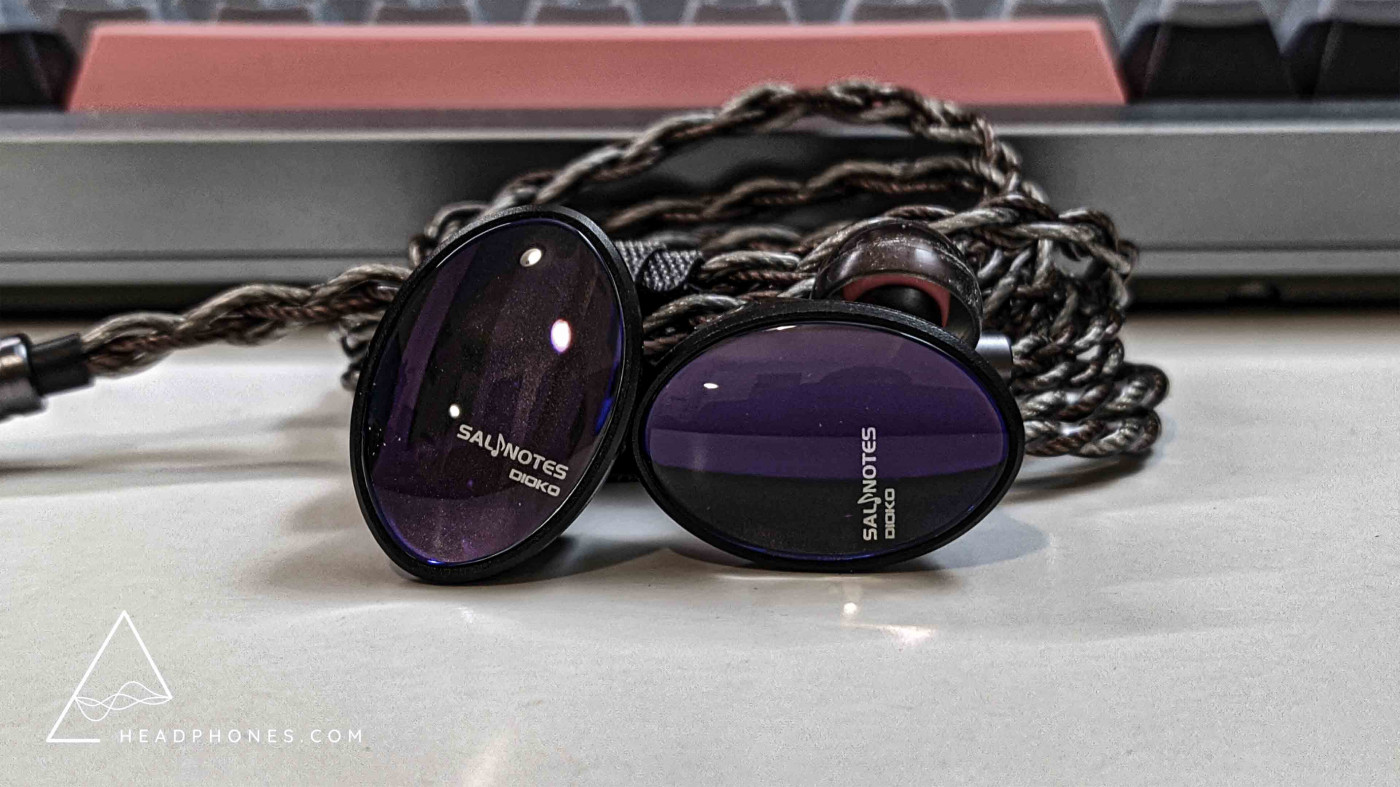 I say this because I am one of the reviewers affected by this problem. I initially thought my Dioko had the proper filters as it sounded quite good. It didn’t have anywhere as much upper mids compared to the graph presented by Super* Reviews. Similarly, my friend Precogvision had the same experience, albeit with a little less pinna gain than my unit. Neither of ours were perfectly aligned to the sample on Crinacle’s measurement database but we chalked it up to unit variance. However, upon installing the correct filters the upper mids were reduced to be in line with Crinacle’s sample. As you can imagine, this creates a mess when it comes to reviewing the Dioko. Despite the fact that the majority of customers won’t have an issue with the filters, I can’t simply ignore the version of the Dioko I heard with the incorrect filters. This review will therefore look at the Dioko with both the stock (incorrect) filters and correct filters.
I say this because I am one of the reviewers affected by this problem. I initially thought my Dioko had the proper filters as it sounded quite good. It didn’t have anywhere as much upper mids compared to the graph presented by Super* Reviews. Similarly, my friend Precogvision had the same experience, albeit with a little less pinna gain than my unit. Neither of ours were perfectly aligned to the sample on Crinacle’s measurement database but we chalked it up to unit variance. However, upon installing the correct filters the upper mids were reduced to be in line with Crinacle’s sample. As you can imagine, this creates a mess when it comes to reviewing the Dioko. Despite the fact that the majority of customers won’t have an issue with the filters, I can’t simply ignore the version of the Dioko I heard with the incorrect filters. This review will therefore look at the Dioko with both the stock (incorrect) filters and correct filters.
Frequency Response and Tuning of the Stock (Incorrect) Filters
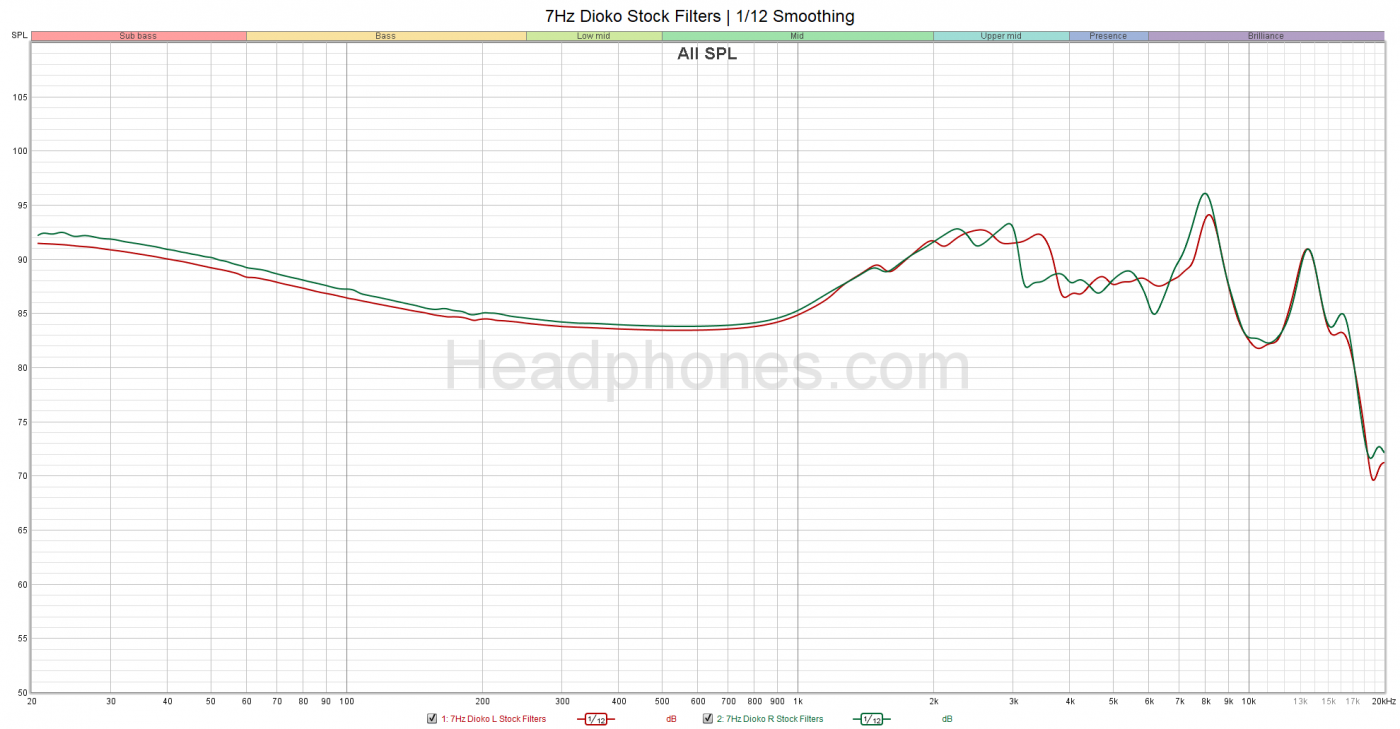 Frequency response of the 7Hz x Crinacle Salnotes Dioko with the stock (incorrect) filters. Measurement taken with an IEC-711 clone microphone. Comparisons can only be made relative to other measurements taken by this specific microphone. A peak at about 8 – 10 kHz is likely an artifact of the measurement rig and may not exist as depicted here. Measurements above 8 kHz are not accurate. If possible, reference multiple measurements.
Frequency response of the 7Hz x Crinacle Salnotes Dioko with the stock (incorrect) filters. Measurement taken with an IEC-711 clone microphone. Comparisons can only be made relative to other measurements taken by this specific microphone. A peak at about 8 – 10 kHz is likely an artifact of the measurement rig and may not exist as depicted here. Measurements above 8 kHz are not accurate. If possible, reference multiple measurements.
Here is the graph of the Dioko with the stock (incorrect) filters of my unit. As you can see, the left/right channel matching isn’t the best, but this is typical of these planar IEMs and not something I would worry about. You’ll hear it in a sine sweep but practically speaking it’s nearly imperceptible in actual music.As cliched as this might be, the Dioko with the stock (incorrect) filters sound exactly like it graphs. The upper mids dominate, making the Dioko a very midrange-centric IEM. Vocals, guitars, snare drums, etc. had an appropriate amount of forwardness and energy. I didn’t find it overly shouty and there was nothing really negative to speak of in its timbre. It sounds like it’s tuned primarily for clarity, which is a good thing in my eyes.
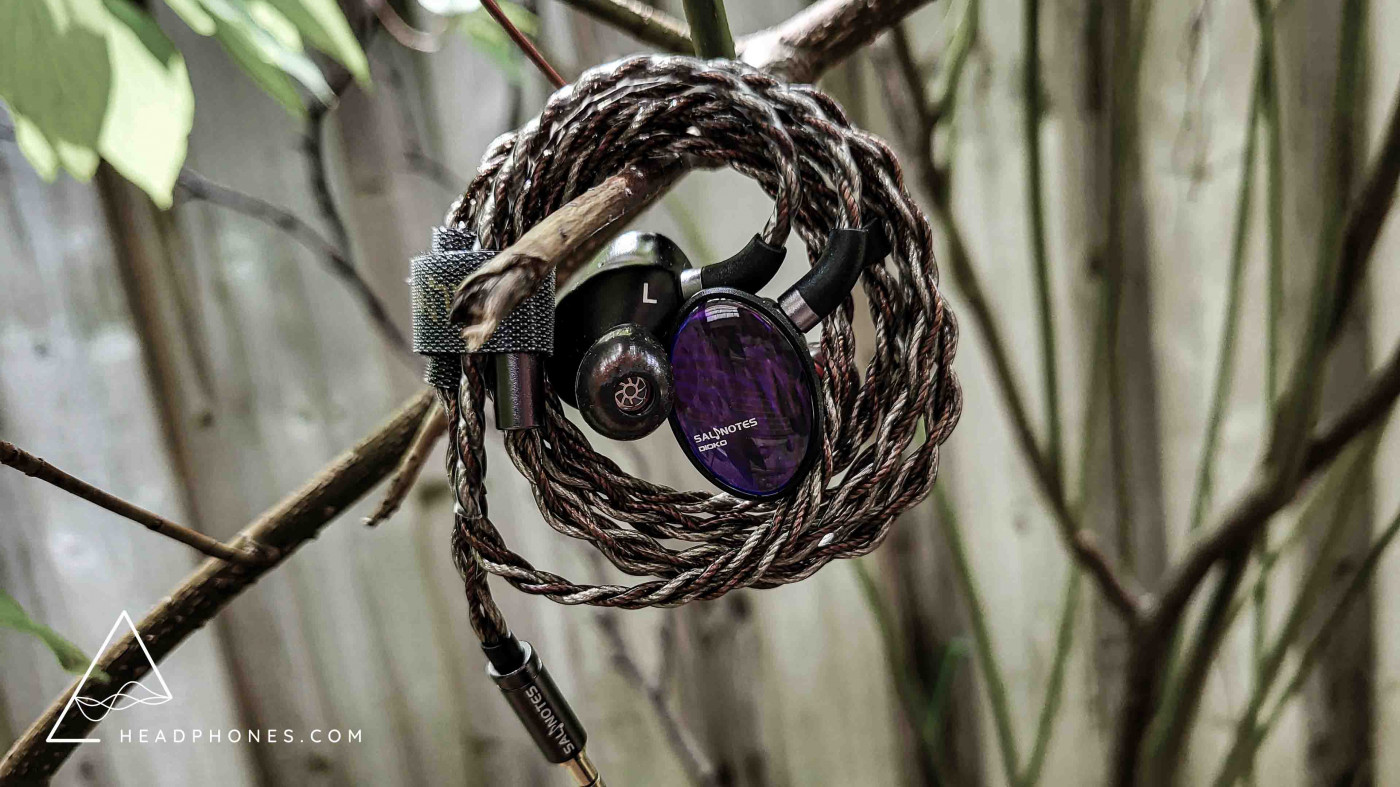 For the treble, there wasn’t really any sibilance or excessive sharpness that I noticed. Hats and cymbals notes sound washy, with less emphasis on the initial stick impact and more focus on subsequent decay. While I prefer hearing that more of the crisp attack in the hats and cymbals, the approach the Dioko takes here is effectively fatigue-free.
For the treble, there wasn’t really any sibilance or excessive sharpness that I noticed. Hats and cymbals notes sound washy, with less emphasis on the initial stick impact and more focus on subsequent decay. While I prefer hearing that more of the crisp attack in the hats and cymbals, the approach the Dioko takes here is effectively fatigue-free.
The bass of the Dioko is its one relative weak spot. Quantity wise, it’s sufficient. The Dioko is far from a basshead IEM but has enough bass to avoid being anemic. My primary complaint is that it’s rather bland. It’s not bad but it’s not particularly amazing either. There isn’t much slam, and the kick and floor tom of the drums lack a sense of depth beyond the initial impact. There’s little meat on the bones, so to speak. But other than that, the bass response is quick and nimble. It doesn’t ever get bogged down in a track.
Frequency Response and Tuning of the Correct Filters
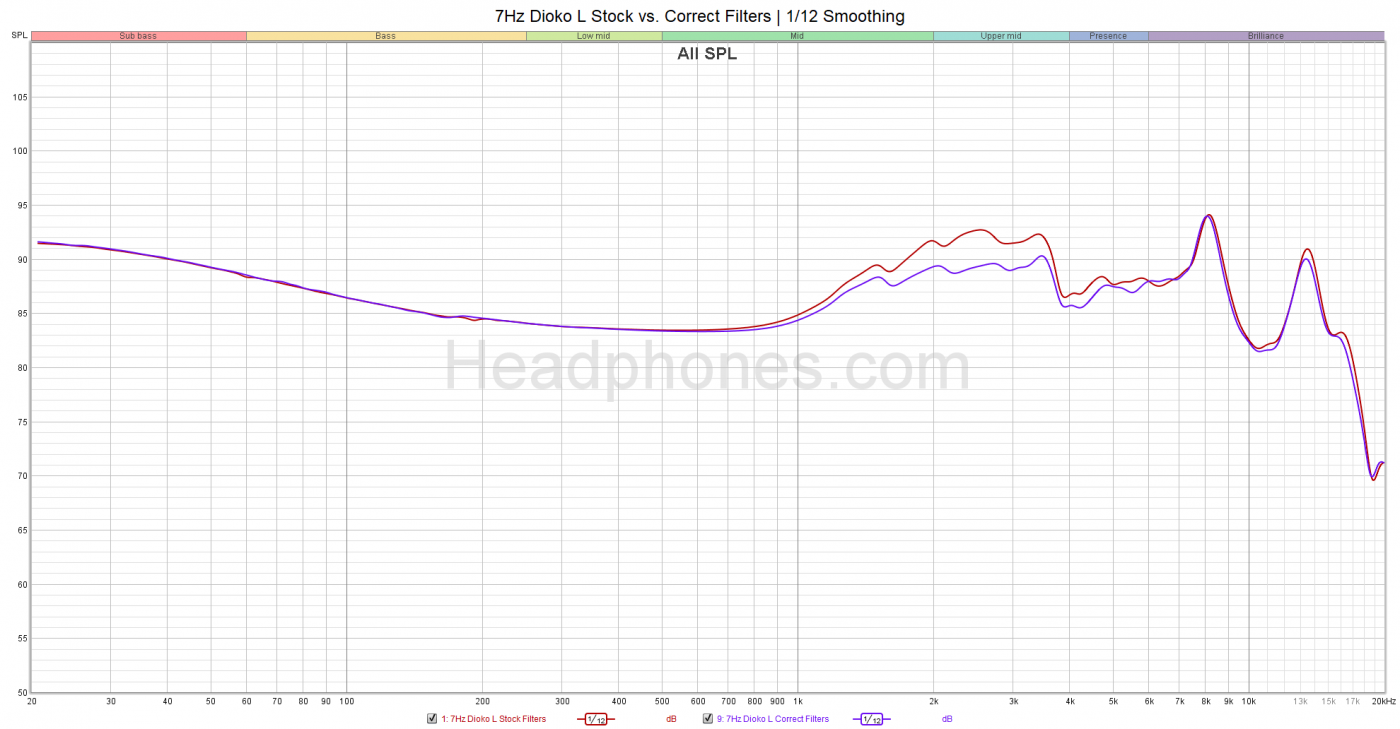 Frequency response of the 7Hz x Crinacle Salnotes Dioko with the correct filters.
Frequency response of the 7Hz x Crinacle Salnotes Dioko with the correct filters.
Immediately, you can see that the pinna gain is tamed by an average of about 3 dB. Not a night-and-day difference but does significantly alter the Dioko’s tonal balance. For reference, here it is compared to Crinacle’s sample in his measurement database. The representative Dioko if you will.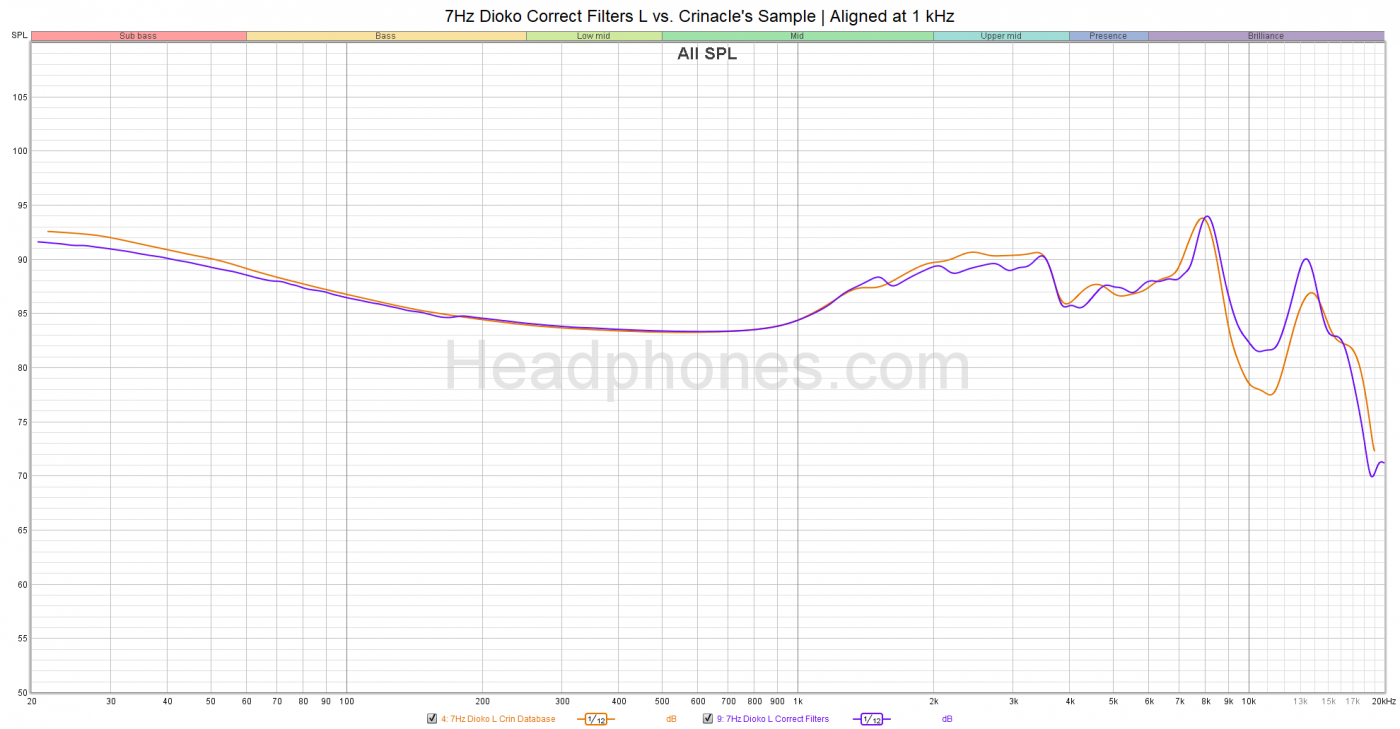 Frequency response of the 7Hz x Crinacle Salnotes Dioko with the correct filters vs. Crinacle’s database sample.
Frequency response of the 7Hz x Crinacle Salnotes Dioko with the correct filters vs. Crinacle’s database sample.
The effect of the filter makes the Dioko warmer with a more mellow, organic tone. This is generally what I would expect when reducing the upper mids in this fashion. Vocals and other midrange focused instruments aren’t as forward as before but still sound excellent. I actually prefer this milder midrange as it makes the Dioko sound a little more mature and refined as the tuning isn’t dominated by the upper mids.
However, this refinement is a double-edged sword. There are two effects that stem from the lowered pinna gain. The first is the bass. Remember how I said the Dioko’s bass was rather bland? The filter swap doesn’t do it any favours. As there is less emphasis on the upper mids, you can hear more of the Dioko’s low end. And here is where some of its deficiencies start to be revealed. At times, it can feel as if the driver is straining in bass heavy songs and note texture suffers as a result. This is accompanied by a pillowy-ness in the kick and floor tom. The initial oomph and transient definition is there but the body of the note isn’t backed by a firm impact.
Next is the treble. I noticed that after the filter swap, the Dioko had moments where it sounded a little sharp. This was surprising as the measured graphs are practically identical in the treble. To try and identify it, I did a sine sweep and found a couple minor peaks at 6 kHz and a 12 kHz. I think by reducing the upper mids, these peaks were revealed as overall volume is increased to compensate. Unfortunately, it leads to some sibilance and harshness in the vocals. These peaks aren’t make-or-break for me as they don’t affect much of my library and are quite tolerable. It doesn’t affect the hats and cymbals much either – those still sound washy. As usual when it comes to the treble, your mileage might vary. I have seen people reporting of overly sharp treble but it’s not clear if they had received a set with incorrect stock filters.
Presentation
But enough about tuning. How does it perform on a technical level? I mentioned above that the stock filter Dioko seems to have been tuned with clarity in mind. For the Dioko with the correct filters, I would say the word coherent is more appropriate given the mellower tuning. Specifically, I was surprised at how well the Dioko was keeping up on math rock tracks. There wasn’t a recording where the Dioko couldn’t handle. The Dioko is satisfactorily resolving and is where a good budget-midrange IEM should be nowadays.
Staging is decent. There is good horizontal width, imaging, and instrument separation. Height and depth are limited, as typical of IEMs. As stage depth is limited, you don’t get much of a layering effect. But the Dioko does have a good sense of spacing in general and instruments don’t feel like they’re congested in any way. Dynamics are a little compressed as noted with my nitpicks in the bass. My general impression of the Dioko is that it has a “what you see is what you get” feeling. My initial thoughts in how it presents sound didn’t really change in after a week of listening compared to the first 5 minutes.
Love our in-depth reviews?
We test and review hundreds of headphones every year. Sign up to get the latest news, reviews, guides, and more in your inbox. Join the 60,000+ like-minded audio lovers who love our newsletter!
Comparison to the 7Hz Timeless
I think it’s fair to say that it was hoped the Dioko would be a cheaper, better tuned Timeless that retained the same technical performance. So how does it compare? The Timeless has more warmth in the lower mids which is balanced by having plenty of upper mids. This gives both male and female vocals a pleasing tone. The bass of the Timeless is a little less pillow-y sounding with a more body behind the note. Kick, toms, and the bass guitars have greater weight to them. However, the trade-off is more bass bloom whereas the Dioko sounds cleaner overall. Importantly, the treble peaks are tamer on the Timeless compared to the Dioko and the harsh edge and sibilance is relaxed.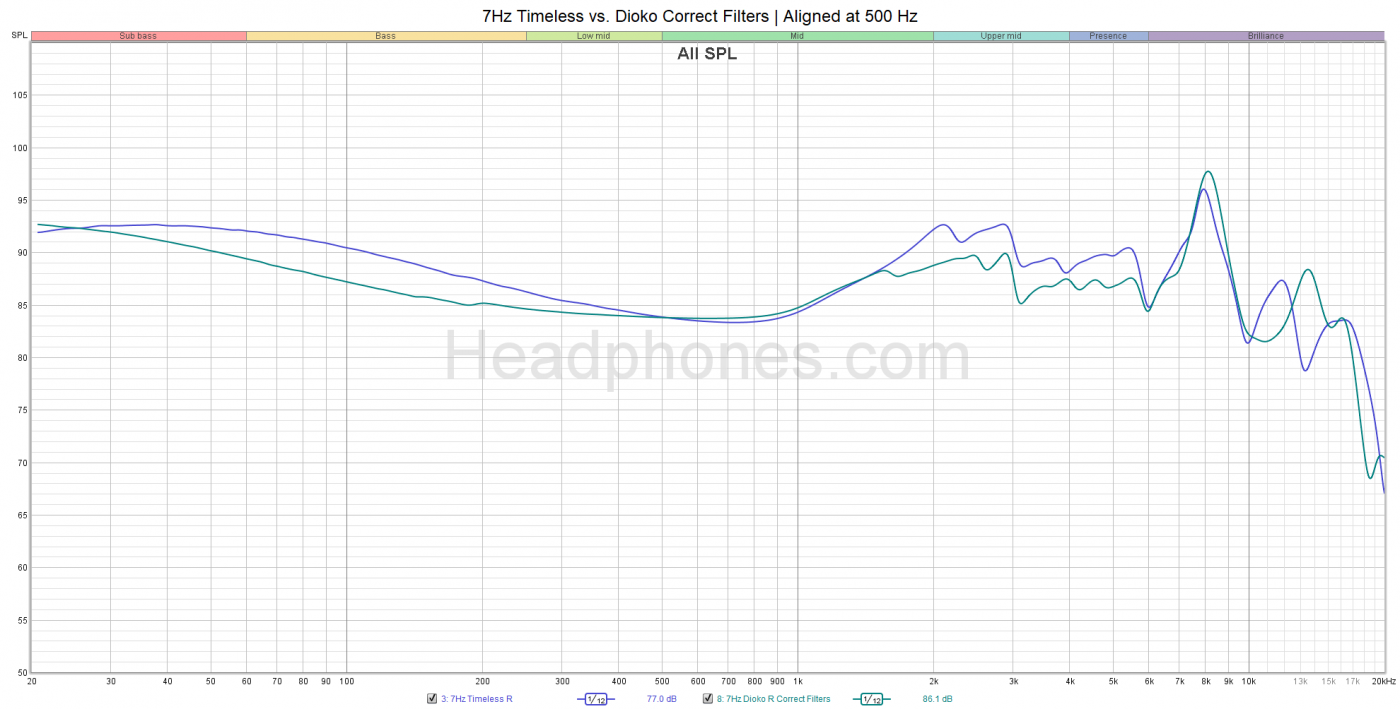 On a technical level, the Timeless’ staging feels a little larger and more open. I think their resolving ability is fairly similar to one another. While the cleaner tuning and added treble sharpness makes the Dioko feel a bit more “hi-res” compared to the Timeless, it’s not like I’m hearing hidden notes on the Dioko. It’s simply more in-your-face than the Timeless is. In terms of dynamics, the greater bass impact of the Timeless allows it to edge out the Dioko.Overall, I think I would lean towards the Timeless. The Dioko is more neutral but the Timeless is more enjoyable for me. The hint of lushness in the vocals, added bass dynamics, and relaxed overall sound gives the Timeless more depth to it. That said, I can appreciate the Dioko’s coherency and “what you see is what you get” feeling. I can certainly see myself taking the Dioko in some situations.
On a technical level, the Timeless’ staging feels a little larger and more open. I think their resolving ability is fairly similar to one another. While the cleaner tuning and added treble sharpness makes the Dioko feel a bit more “hi-res” compared to the Timeless, it’s not like I’m hearing hidden notes on the Dioko. It’s simply more in-your-face than the Timeless is. In terms of dynamics, the greater bass impact of the Timeless allows it to edge out the Dioko.Overall, I think I would lean towards the Timeless. The Dioko is more neutral but the Timeless is more enjoyable for me. The hint of lushness in the vocals, added bass dynamics, and relaxed overall sound gives the Timeless more depth to it. That said, I can appreciate the Dioko’s coherency and “what you see is what you get” feeling. I can certainly see myself taking the Dioko in some situations.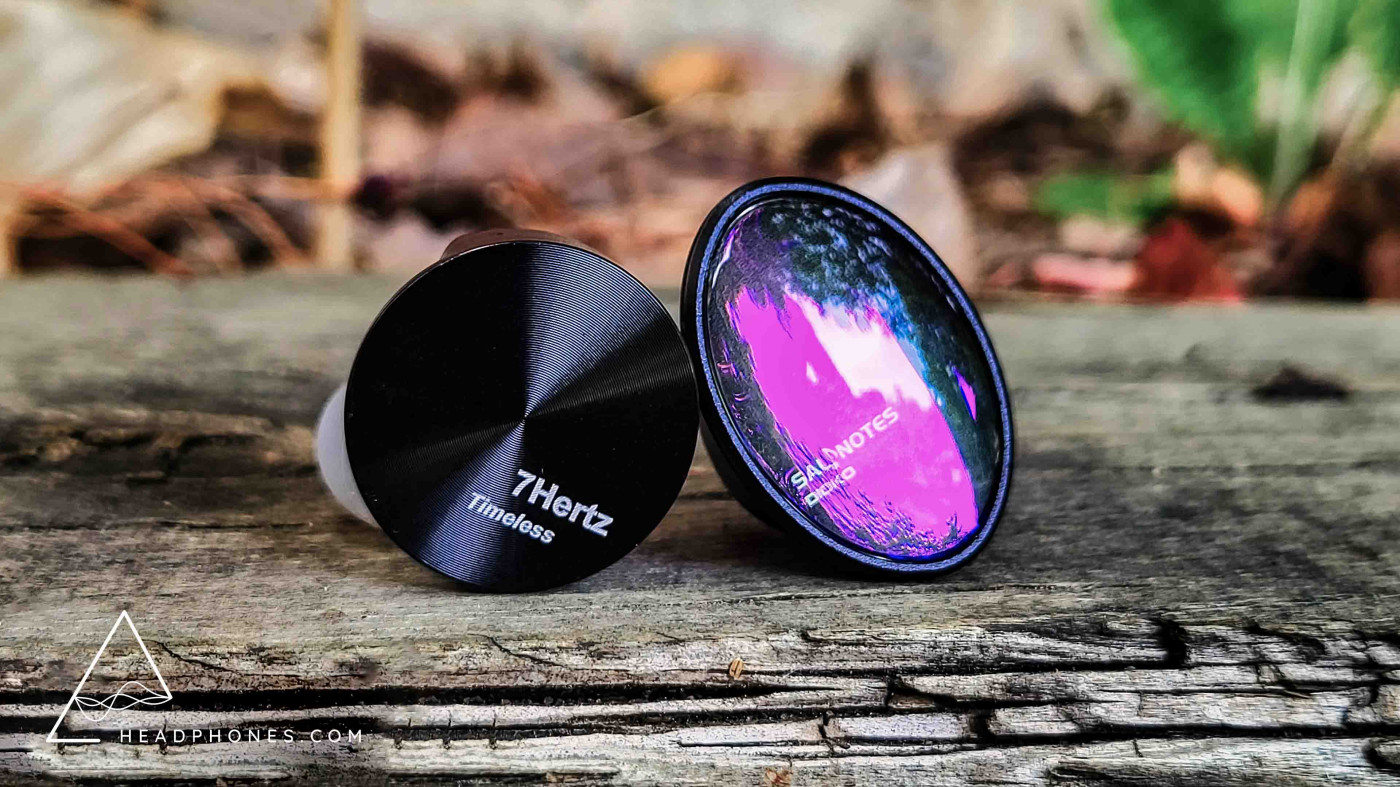
Should You Buy It?
Yes. I despite my criticisms, I do like the Dioko. It’s a very strong value proposition at the $100 mark, especially if you factor in the great accessory set you get along with it. If you’re new to the hobby and looking for an IEM to start with, the Dioko is definitely worth checking out. But if you already own another planar like the Timeless or Shuoer S12, you can safely skip it. I think it’s reasonable to say that it’s one of the best IEMs in its price category. It’s truly unfortunate that the mess with the tuning filters means that customers may have a lingering feeling in the back of their mind as to what unit they actually got.
I’ll be honest, this was a challenging review to write. There are many directions I could have taken this review. For example, a more extensive comparison with many different IEMs like the MoonDrop Aria (which, yes, the Dioko is an upgrade to) or added a section playing around with EQ for the Dioko to the Timeless and vice versa. Unfortunately, there are only so many things you could reasonably do in a review. And the truth is, the Dioko is a late-comer to the planar IEM game. It’s a “me too” product whose greatest innovation is a lower price tag, not necessarily better sound. And at the end of the day, that’s not a bad thing. The more people who can enjoy the hobby the better. With how good IEMs have become nowadays, I think it’s more productive to enjoy the music rather than be overly neurotic about trying to rank and compare Crinacle’s IEMs in a bloated market.
